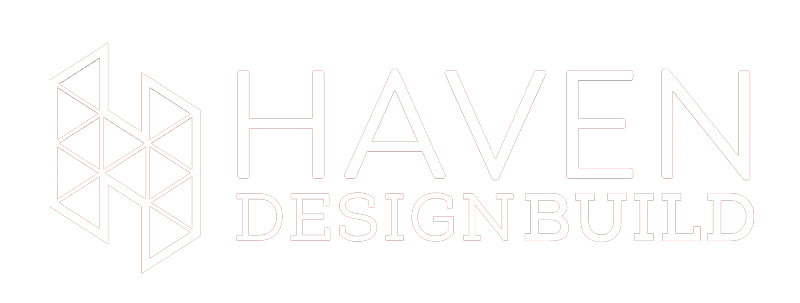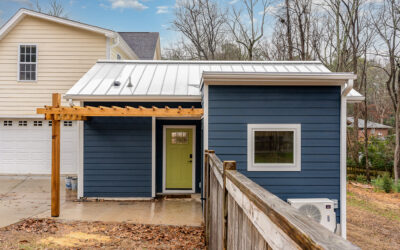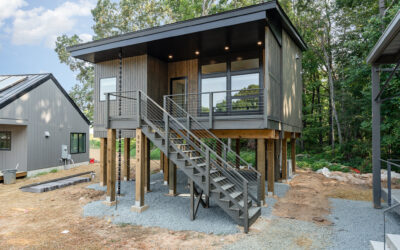
Financing a construction project can seem like a daunting task, but with the right strategy, it’s entirely achievable.
Whether you’re building a new home, undertaking a major renovation, or developing a commercial property, having a clear understanding of your financing options will help you make informed decisions that align with your financial goals.
In this article, we’ll break down different strategies for financing construction projects and help you determine which one makes the most sense for your specific needs.
Step 1: Understanding Your Financial Landscape
Before diving into specific financing options, it’s crucial to assess your overall financial situation. Knowing where you stand will provide clarity on what types of loans, lines of credit, or other financial products might be available and most appropriate for your project. Start by considering these three items:
- Evaluate your creditworthiness: When considering a loan approval, lenders will assess your credit score, financial history, and current debt-to-income ratio. A strong credit score often means better interest rates and terms, so it’s important to know where you stand before pursuing financing.
- Consider your available equity: If you own a property or have other assets, you may be able to leverage these for financing. For example, home equity loans or lines of credit are popular options for homeowners planning renovations. The most comprehensive way to get a complete picture of this is to complete a Personal Financial Statement (PFS), which is often something required by lenders.
- Understand your project’s budget: Have an idea of how much your construction project will cost, factoring in permits, materials, labor, and potential contingencies. This will help you determine how much financing you’ll need and which option will provide the best fit.
Once you’ve assessed your financial landscape, it’s time to explore the specific financing options available.
Option 1: Traditional Construction Loans
Traditional construction loans are a popular choice for those looking to finance new home builds or major renovations. These loans are short-term and designed to cover the costs of the building process until the project is complete.
- How it works: A construction loan provides funds in stages or “draws” as construction progresses. You’ll receive a portion of the loan upfront, with additional draws made based on the work completed. Typically, interest-only payments are required during the construction phase. Once construction is complete, the loan will mature and you’ll need to refinance it with either the same or different lender.
- Pros: Construction loans allow you to borrow the full amount you need, and they’re specifically tailored to the needs of construction projects. They also offer flexibility in how you receive and use the funds. They are calculated based on the future value of the home once the project is completed.
- Cons: These loans can be more difficult to qualify for than standard mortgages, as lenders require detailed plans, budgets, and timelines for the project. They also tend to have higher interest rates than traditional mortgages and may add additional paperwork and delays to the process.
Best for: Homeowners building a new house from scratch or undertaking significant renovations. Developers looking to create a market-rate project.
Option 2: Home Equity Loans or Lines of Credit
If you already own a home or property and have built up equity, you may consider using a home equity loan or line of credit (HELOC) to finance your construction project.
- Home equity loan: This is a lump-sum loan based on the equity in your home and typically comes with a fixed interest rate and repayment schedule.
- HELOC: This is a line of credit that lets you borrow up to a certain limit based on your home’s equity. HELOCs are flexible, allowing you to borrow and repay funds multiple times during the construction process.
- Pros: Both options typically offer lower interest rates than unsecured loans, and the interest may be tax-deductible. They are also more flexible in terms of how funds can be accessed. They are calculated based on the current value of your home and typically financed up to 70%–80% of the total appraised value.
- Cons: These options use your home as collateral, so if you default, you risk losing your property. Additionally, a home equity loan is a lump-sum loan, which means you must be confident in your ability to manage the entire project within the borrowed amount.
Best for: Homeowners with significant equity in their property who want to finance smaller construction projects or renovations.
Option 3: Construction-to-Permanent Loans
A construction-to-permanent loan is a hybrid loan that can help streamline the financing process for new construction projects.
- How it works: This loan combines the features of a traditional construction loan and a permanent mortgage. Initially, it works as a construction loan, providing funds in phases as your project progresses. Once the home is completed, the loan converts into a standard mortgage, eliminating the need to refinance.
- Pros: The primary benefit is the simplicity—it combines both the construction loan and permanent financing into one loan. This can save time, money, and the hassle of having to refinance once construction is completed.
- Cons: These loans may require a larger down payment (typically 20% or more), and the approval process is more rigorous compared to traditional mortgages. Additionally, the terms may be less flexible than a traditional construction loan.
Best for: Homeowners looking for long-term financing who prefer a streamlined process with a single loan application.
Option 4: Other Financing Options
In addition to traditional loans, there are other financing methods you might consider, depending on your situation.
- Personal loans: For smaller construction projects, a personal loan can be an option. These typically have higher interest rates than home equity loans or lines of credit, but they don’t require collateral.
- Crowdfunding or Private Investors: In some cases, homeowners and developers may look to friends, family, or private investors to fund their construction projects. Crowdfunding platforms or investment groups may also be an option for those with unique or high-potential projects.
- Construction Grant Programs: In certain cases, government grants or local programs may offer funding for specific types of construction projects, such as energy-efficient homes or projects aimed at revitalizing underdeveloped areas.
- Friends and Family Loans: In some cases, friends and family are able to help finance a project with a personal loan to the project. This can take on many different forms and it is advised to consult an attorney to help pull together the proper paperwork.
Step 2: Choosing the Right Financing Strategy
Selecting the best financing strategy for your construction project depends on several factors, including:
- The size and scope of your project: Larger projects, such as new home builds or commercial construction, may require specialized loans like construction loans, SBA loans, or HUD loans. Smaller renovations may be better suited for home equity loans or personal loans.
- Your financial situation: Your credit score, available equity, and overall financial health will play a major role in determining what type of financing you’re eligible for.
- Your long-term financial goals: Consider how each financing option fits into your broader financial plans. If you plan to stay in your new home for many years, a construction-to-permanent loan might make the most sense. On the other hand, if you’re looking for flexibility, a HELOC could be a better option.
Step 3: Aligning Design, Budget + Financing
In order to move forward with any type of financing, you are going to need to have a clear understanding of:
- What can be done with your property
- What the project will look like
- How much it will cost
The answers to these questions are exactly what is included in our initial concept design services. As such, once you have a good high-level understanding of how you hope to finance your project, the best place to start will be to work on receiving our three deliverables. These three deliverables are what you can then use to finalize your financing at the same time we are finalizing your design.
Conclusion
Financing a construction project requires careful thought and planning to ensure you choose the right strategy for your specific needs. By evaluating your financial situation, understanding your project’s requirements, and weighing the pros and cons of each financing option, you can select the approach that aligns with your goals and budget. Whether you opt for a traditional construction loan, a home equity line of credit, or even an SBA loan, the right financing strategy will give you the confidence to move forward with your construction project and bring your vision to life.
Schedule a free virtual consultation below:



